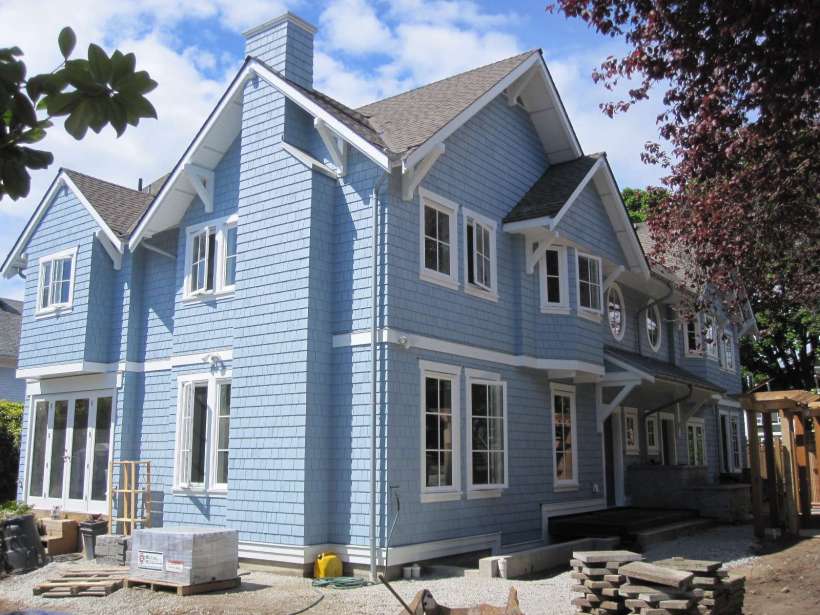The latest leader in The Economist discusses the cost of restrictive land use in cities. Barriers to development have hampered growth, pushed rents through the roof, and limited labor supply in prospering urban centres. San Francisco, New York, and London are particularly singled out for forcing new workers to bid up the cost of limited housing, resulting in oppressive mortgages, exorbitant rents, or numbing commutes. The main culprit? Restrictive and costly local development codes, particularly in the form of conservative zoning for wealthy residential property owners. Is this starting to sound familiar?
Vancouver needs to loosen its residential zoning to remain livable. Housing affordability has been the number one issue for several municipal election cycles, yet the vast majority of our city remains zoned for single-family homes (RS-1). Why? Changes to RS-1 are presumably the third rail of Vancouver politics, and would immediately prompt voter revolt against any politician with the chutzpah — I would call it leadership — to propose higher density. This despite the fact that Kitsilano, Strathcona, Grandview, and other desirable neighbourhoods have enjoyed decades of multifamily zoning policies that serve to enhance their residential diversity and character.
Across Greater Vancouver, the benchmark price of an apartment is $390,200 and a dizzying $1,052,800 for a detached home. In Vancouver West, this rises to $514,400 for an apartment and a stratospheric $2,447,700 for a detached house. Given these figures, can anyone seriously believe that sales of detached homes west of Main Street represent anything more than investment vehicles for the already-wealthy? In what world does $2,447,700 function as housing for a family on Vancouver incomes, even among the highest earners?
The cornflour blue home pictured above is a recently renovated two-family dwelling at the corner of Larch and 6th Avenue in Kitsilano. It was built in the late 1980s, around the same time as the duplex where I live a few blocks away. The building is stratified, meaning that owners on each side of the wall need to talk to each other about maintenance and effectively split the costs of any major repairs. I’d guess that each unit has around 2000 square feet and three bedrooms. While doubtless expensive, the arrangement slashes the cost of a house in Kitsilano for the inconvenience of sharing a wall with someone else. It’s certainly more than a townhouse, and likely more spacious than row housing on equivalent lots. Practicalities aside, the design is cheerful, inviting, and respectful of the surrounding character homes.
Yet this charming home is illegal in most of the city, only possible though special Kitsilano RT-8 zoning. In the words of the City of Vancouver RS-1 District Schedule, the cornflour blue duplex would presumably hinder “neighbourly development” by obstructing the “outdoor space and views” that RS-1 afford. Would such a building really pose an existential danger in the 60% of our city currently restricted to one principal dwelling per lot (and often much larger lots)? How can the vernacular eaves and bay windows possibly be construed as an affront to neighbourly development and livability? Indeed, our single-family districts are already littered with illegal secondary suites, so density of people cannot be the issue. Why is a duplex, where two families are able to own the lot instead of one, so vastly different so as to be prohibited across most of the city?
Juxtaposed with ever-increasing Vancouver home prices and the near-constant grind of news on affordability, the preservation of single-family housing (that is, RS-1 zoning) merely for the sake of “outdoor space and views” makes less and less sense. I would challenge anyone to visit RT-7 and RT-8 in Kitsilano and explain how the scale of these neighbourhoods would materially impact their use of space and enjoyment of views, and further challenge them to explain why the City should actively protect such low residential density when a house costs over $1,000,000 anywhere within city limits. Could it be that our politicians are too frightened of telling west side owners that a small reduction in lawn space must be made to ensure that relatively well-off families seeking to own more than two bedrooms still have a chance of living in Vancouver? We’ll set aside the pernicious issue of whether any grass needs to be set aside for the sake of middle-income residents or — God forbid — the poor.
In a sense, the restricted supply of Vancouver housing has already resulted in a desirability trap. Even if swaths of single-family lots are rezoned to permit duplexes by fiat, those duplexes will then signal an investment opportunity, and many units may simply be left vacant to accrue value for absentee owners, as single-family homes are today. It will also take time to satisfy pent-up demand for such housing, of which Vancouver has long had precious little stock. Prices would not magically fall, and our elementary schools would not suddenly fill their classrooms.
But it would be a necessary step to keeping our city open to more residents than those who are already here. Many young families would be happy to live in the cornflour blue duplex, if only there were more of them.


Pingback: Post-Referendum Blues | Reflecting Vancouver
Pingback: Landmark Links June 28th – Tank Commander